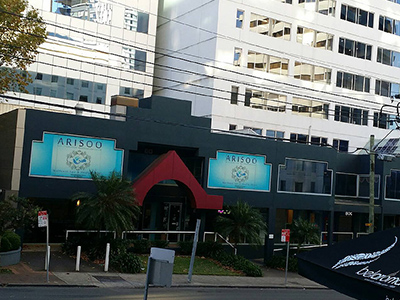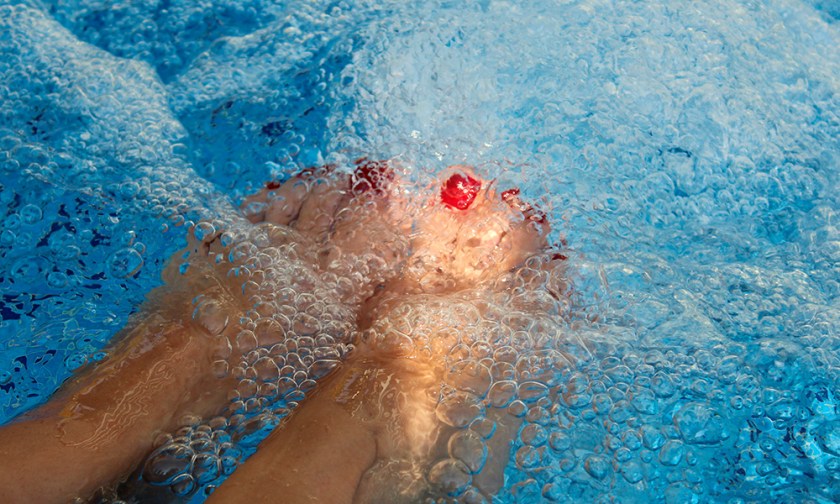South Korea… land of cushion compacts, sheet masks and snail creams, is currently holding court over the beauty world.
We wait with anticipation to be wowed (and vaguely perplexed) by the latest K-cosmetic or skincare trend.
But what about the ancient beauty ritual Koreans have cherished, long before seven-step skincare regimes set the status quo?
Let’s explore the confronting yet deeply cleansing world of Korean bathhouses, a.k.a jjimjilbang. However, be prepared to leave your clothes, underwear and faint heart in the change room.
These public bath houses can be traced back to the ancient kingdom of Silla (57BC – 935AD) when Koreans (in their long standing pursuit of mind and body wellness) sought to maintain their cleanliness in accordance with Buddhist custom.
Bathhouses are now a cornerstone of Korean culture, where young and elderly alike go to unwind. Sexes are siphoned into separate spas and, for women, jjimjilbang is as much a place of beautification as it is bathing.
I’ll never forget my first visit to a traditional Korean bathouse. It was about ten years ago, in a remote village called Bugok, a seven hour bus ride out of Seoul.
After parting with a few silver coins, I found myself inside a space atop the town’s natural hot spring. There were two ‘baths’ (one tepid, one hot) — large, square and jacuzzi-esque. Then, opposite on another wall there were taps reserved for hair washing.
In Korea’s bigger cities, jjimjilbangs are popular for their holistic health benefits rather than necessity. But, in small villages like Bugok, (where Western style bathing facilities aren’t the norm), a thrice weekly trip visit is standard. On that day, there were about 20 women luxuriating in the warm, steamy pools.
My initial ‘fish out of water’ feeling of mortification (from being nekkid) was soon replaced by a ‘when in Rome’ style bravado, although nothing could prepare me for my shock when, without pretext, I was accosted by an ajumma who began vigorously scrubbing my back with a ttaemili towel. (These towels are quintessentially Korean—developed in the 1970s to remove dead skin cells and maximise the health benefits of the bath.)
Including my scrub down from the ajumma, relaxing in the sauna, then drying my hair, I spent at least 1.5 hours in the Bugok jjimjilbang. I emerged relaxed, smooth skinned and, as expected, squeaky clean.
Returning to Sydney, I yearned to replicate my experience but found that the Ginseng Bath House (a Kings Cross institution frequented by the Glitterati) had closed in recent times. The closest thing in my city was the Turkish Bath Centre in Granville.
Over the years, I have found my mind flitting back to my jjimjilbang jaunt, and intermittently I’d search Google with hope one would open on my home turf. That’s how I came across Arisoo Korean Bath House a month ago. It had recently opened in Chatswood, Sydney. Incredulous and delighted, I immediately made a booking.

When I arrived for treatment, I was amazed that, Phyts, one of my favourite French skincare lines, was stocked behind the counter. The Western spa trimmings didn’t stop there—Arisoo boasts a host of treatments outside of the humble jjimjilbang experience, from shellac manicures to reflexology.
Krystal, owner of Arisoo, born and bred in Korea, emigrated to Australia 20 years ago. “As you’d expect this place is ladies only,” she explains, as she shows me around the sprawling premise. “My clientele is multicultural. We have a lot of Vietnamese, Chinese and Russian regulars. Only about 10% of people who come in are Korean.”

Unlike Bugok’s bathhouse (formed naturally, from volcanic remains), Arisoo’s water streams from man-made jets. But entering the bathing area felt like dejavu. Its floor plan, (complete with 2 tubs and a wall of taps), is uncannily similar to its Korean counterpart in remote Bugok. I’m also handed a ttaemili towel.

“I love this place. I’m definitely coming back,” a patron raves to her friend while soaking in one of the tubs.
An old hand after my prior jjimiljang feat, I’m only a little surprised when an ajumma (clad in a leapord print bra and Bridget Jones knickers) coaxes me (quite vehemently) out of the bath into an adjacent treatment room.

Using a delicious smelling salt scrub, she exfoliates and massages me with ox-like strength, from head to toe. After I rinse off in the shower, I’m beckoned back to the treatment room. A mask made solely from grated cucumber is deftly packed on my face.
I surface from my treatment feeling buffed, polished and, as I did back in Bugok, totally brave hearted. If you’re looking for the real-deal, look no further…
“We are the only place in Sydney like this…” says Krystal. “We want the public to experience something truly authentic.”





